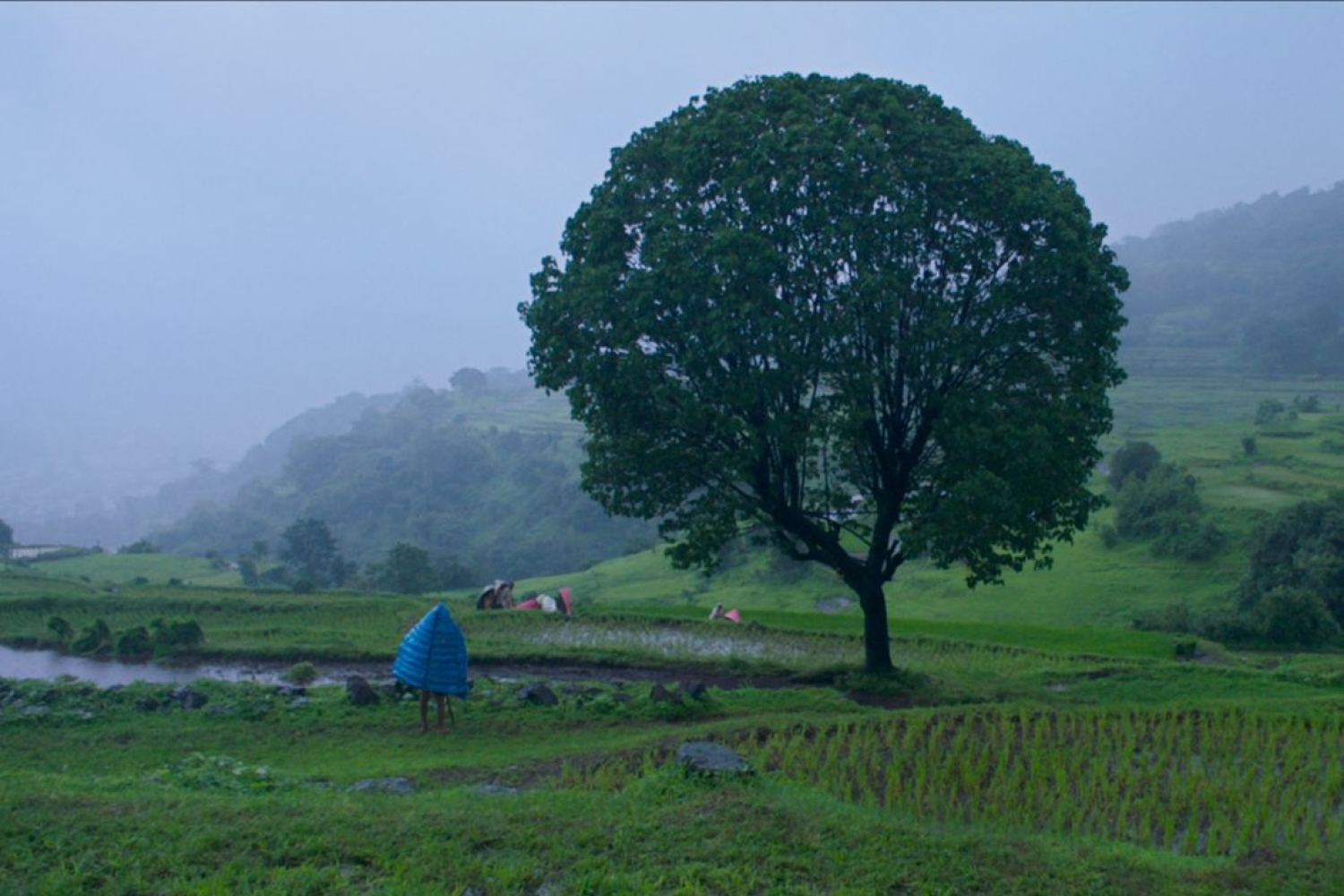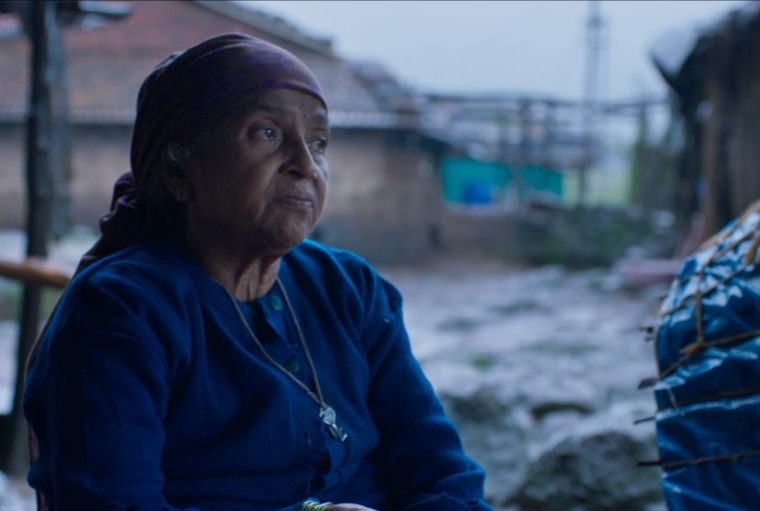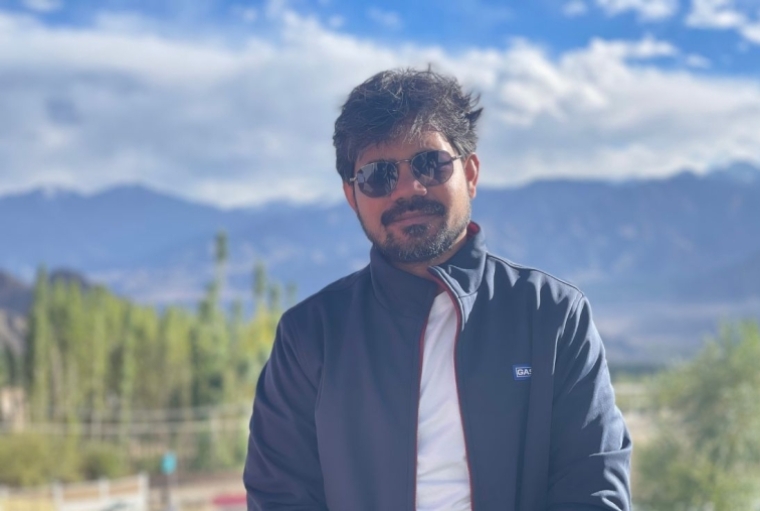
Still from Monsoon Walk

Still from Monsoon Walk
After writing and creating such different stories, do you know where you belong?
Honestly for me, it's cyclical. I approach filmmaking, more like a genre. Killa, Three of Us and Monsoon Walk, are influenced by my childhood. The place where I grew up amongst the nature. My association to those subjects is experiential. But when it comes to School of Lies and Pataal Lok, they have their own truth. Then, whatever you are sensing and feeling from the script will translate on film. Rest is all craft. I like all kinds of cinema. And I want to make every kind of film.
But when you're writing, is there a particular emotion or feeling that you're trying to initiate?
The most important thing is what is the kind of feeling you want to convey or you want to feel. You can only talk about yourself. I am my audience. I just go with my gut. The written material has to touch me first. And then of course, it's an audio visual medium. I shoot my own films. I'm very particular about the cinematic language. After that it's very instinctive, but most of the times I keep it very simple. I don't want my work to come across as fake or overtly textured. Then the filmmaking looks too insecure if you try to make it too technical. I mean if I'm dealing with action or fantasy, or adventure, then that's different. That requires a different kind of work. But the stories I have made in the past are the ones with which I relate to on a personal level.
Some of your work is not inspired by your personal life unlike Killa and more recently Monsoon Walk which obviously offered more insight. Is that where you feel most comfortable? Or with other stories because you get an objective view on them?
I guess it's, it's both. In the initial part of my career, I borrowed from my own experience. And then as you start mastering the craft, you start looking outside, and then that objectivity also starts coming into your work. So that shift happens over a period of time. Pataal Lok was written by Sudip Sharma and it resonated with me. It's all about the written material for me. One should take up the script if it resonates with you and if you see some merit in it. And if someone asks me to develop something on a new subject, then definitely I would ask ample amount of time, because you have to form a subconscious beforehand to start working on the script.
Did Monsoon Walk come from a personal space since you dedicated it to your grandmother?
Not really. I was really close to my grandmother and I grew up in a small town called Telegaon where my father was a Block Education Officer and I used to travel with him. Telegaon is famous for recording the highest amount of rainfall after Cherrapunji and Mahabaleshwar in India. So the idea behind making Monsoon Walk was to capture the beauty of that region which is very dear to me.
All your films are cinematically so aesthetic. Every frame is like a painting. Do you use that as an aid for your storytelling?
That's just how I think. It comes naturally to me. I'm born to do this.
How does inspiration come to you?
It could come in any form; tangible or intangible. I don't restrict myself. It's all stored in the subconscious and if you are open enough to sense things, it'll all come to you. You're constantly interacting with the universe.

The protagonist in Monsoon Walk
Is it difficult for you to step away from your characters?
It's a very strange feeling. It's a very bittersweet melancholic feeling. But I've learnt how to deal with it over a period of time. It is like a void. It is all part of the process I feel. Sometimes while editing you feel it's not working and then self doubt creeps in. And sometimes you are very happy with the result. I feel so vulnerable about my characters. It's like you give birth to a baby, nurture it and then send it out into the world.
But do you ever start becoming your characters?
No, because you empathize with them. You don't become them. Becoming is very obsessive. I feel one should keep that distance and empathize with your characters and let them flourish on their own. I don't think if the character is right or wrong. You hold a thread and walk with it. A very delicate thread that is.
There are hardly any dialogues in Monsoon Walk. You rely so heavily of expressions, frames, the character's being.
The film is about sense of time in a particular period. And the rhythm of that period. So the creative choice depended heavily on that. And for me the most important thing was to give a cinematic feeling to the same feeling of the monsoon I had when I was a kid. And to give them a feeling like they visited that place. And while seeing the film, they lived and felt the emotions of the characters in the film. That was my main intention.
How do you work with non-actors?
It's the same with children and non-actors. You just have to be interested in people. And you have to know that with every person, the language of communication is going to be different. You have to be different with different people. You can't deal with everyone the same way. You get to know what kind of people they are; their likes and dislikes. Respect their boundaries and genuinely show interest in them. How will that resonate with audience if it is not resonating with me. The first step is intention, integrity and to create love and trust, if you have amongst the people you are working with. That is the key.
Words Hansika Lohani
Date 13.06.2024

Avinash Arun